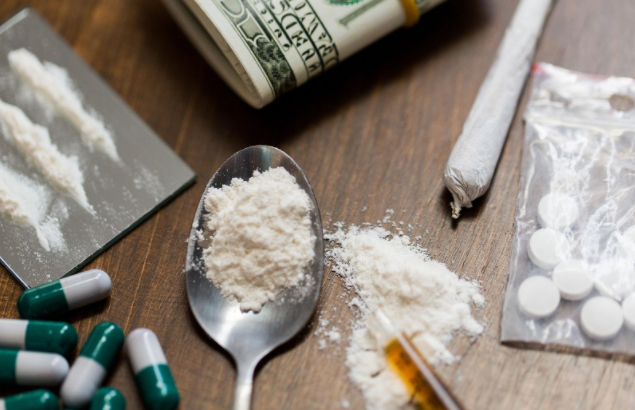Hardest Addictions in the World
What is Addiction and Why it Matters
Addiction is a disease or, more accurately, a group of diseases. Addiction is a brain disease that causes compulsive behavior despite harmful consequences to the person addicted and to those around them. People use substances and behaviors to change their moods or avoid pain in various ways.
Addiction has many different faces, as it can affect any person or people of any age, gender, race, religion or socioeconomic background. Drug addiction can take many forms including alcohol addiction and gambling addiction.
The causes of addiction are not yet fully understood but research shows that it often starts with genetics and changes in the brain’s structure and chemistry that occur over time from substance abuse.
SUBSTANCE EFFECTS ON THE BRAIN
The brain is a wonderfully complex organ. It is made up of billions of cells that work together in order to regulate the body and the mind. Though we still have a lot to learn about the brain, studies that have been done so far have provided us with some very interesting information about it.
A study conducted by scientists at Stanford University found that addicts’ brains reacted differently to certain cues related to their addiction than healthy controls, even when they were not actively using drugs. This means that drugs or alcohol can affect an addict’s brain even when they are not actively intoxicated
The prefrontal cortex is responsible for impulse control and attachments to other people. When this part of the brain is impaired, someone may struggle with addiction.
The top 10 addictions in the world include cannabis, benzodiazepines, and amphetamines. Other versions in America include gambling, food, and spending time on the Internet.
Many of the things considered addictions are not necessarily the worst. The intensity and speed that addiction takes hold in someone’s life vary for each individual circumstance.
Cutting out tough addictions from your life on your own can be dangerous. Here is a list of the toughest addictions to kick for users.
Top 10 Worst Addictions in the World to Quit
Here are the Hardest Addictions in the World to quit in 2023;
- Alcohol Addiction
- Heroin Addiction
- Cocaine Addictions
- Cigarettes Addictions
- Prescription Painkillers Addictions
- Methadone Addictions
- Amphetamine Addictions
- Benzodiazepines Addiction
- Crystal Meth Addictions
- Process Addictions Like Gambling, Sex, And Food
1. Alcohol is the Hardest Addiction
Alcohol is one of the most commonly abused drugs. Alcohol addiction can be triggered by a person’s genes, environment, or by any other factors that they are exposed to.
A person who is addicted to alcohol will display some of these signs:
– Becoming irritable when they don’t drink
– Developing an increased tolerance for alcohol
– Spending increasing amounts of time drinking and recovering from a hangover
– Losing interest in activities that were once enjoyable
– Drinking themselves into a state where they risk death or serious injury.
In America, 30% of the population has dealt with an alcohol abuse disorder in their life – that’s 100 million people. In 2010, 18 million people were addicted to alcohol. Alcohol is one of the most popular substances to abuse and becomes addicted to. It may not be chosen, but when millions of people are abusing it, it becomes an addiction.
To put this into perspective, approximately 8 people will die every hour primarily due to the consumption of alcohol-related products. Interestingly enough, despite these statistics, there are still many alcoholics who drink at inappropriate times and most likely use other drugs as well.
What makes alcohol so addictive?
Alcohol can affect the brain. When ethanol alcohol is abused, it will change how the brain functions. Chronic use leads to addiction. If you continue to use substances it will soon no longer feel normal without them. The chemicals in the brain send messages which affect how the brain responds.
Your brain stores alcohol as being problematic for producing addiction-related neurotransmitters. This occurs because of how it alters the production of dopamine and norepinephrine. These includes:
GABA
GABA is a neurotransmitter which is an inhibitory neurotransmitter. It helps the brain to keep calm and reduce stress.
The peripheral nervous system is made up of two broad types of neurons, sensory neurons which transmit information from the environment to the brain, and motor neurons that carry information from the brain to muscles.
The central nervous system consists of the brain and spinal cord. The CNS controls body functions such as breathing, movement, emotions, thought process, and sleep-wake cycles. The spinal cord is a part of CNS that connects both hemispheres of the brain with nerves throughout the body so that they can be monitored by higher authorities in case they get damaged or injured in any way.
DOPAMINE
Dopamine is a neurotransmitter that plays a key role in cognition, motivation, and motor control.
This hormone also plays a critical role in the brain’s reward circuitry. When we feel happy due to some external stimulus, it is because dopamine is released in the nucleus accumbens of the brain. This release of dopamine gives us feelings of pleasure that motivate us to repeat the actions that caused this response.
The withdrawal symptoms of drinking are challenging, and even deadly. Due to the change in brain chemistry, when you stop drinking, you may experience:
- Hallucinations.
- Tremors.
- Convulsions.
- Delirium tremens.
- Shaking and shivering.
- Irregular heartbeat.
- Sweating.
- High temperature.
2. Heroin Addiction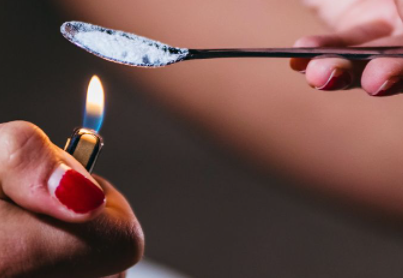
Heroin is an opioid drug that is highly addictive. Withdrawal from heroin causes a person to feel sick, agitated, and depressed.
Heroin use has been on the rise in recent years due to the increase of heroin availability and a decrease in price. In most cases, people who abuse heroin are not aware of how addictive the drug really is. They may use it for recreational purposes or they may start using it after being prescribed pain medication then move to heroin because it’s cheaper and easier to obtain on the street.
We should be aware that there are many different kinds of treatment available for those struggling with addiction as well as an online helpline available 24 hours a day 7 days a week, just check the list of the best addictions recovery centers in the world here.
As an opioid, heroin blocks pain and gives a feeling of euphoria. This is because the drug binds to opioid receptor cells. When heroin is used, the body converts it into morphine which gives a person a rush of pleasure and extreme relaxation. This is what causes people to keep using heroin repeatedly. By chronically abusing it, the brain begins to adjust and can get used to a higher level of opioids, which is known as tolerance.
Heroin is one of the most addictive and dangerous drugs in the world. Taking extra heroin (an injection with a much higher than usual dose) can make you feel sleepy, slow and lead to heart and brain damage. It’s also more addictive than other drugs like cocaine or cannabis. Heroin will continue to be hard to shake (break free from), even though it won’t show up as fast on a drug test.
When a person becomes dependent on heroin, they will need more of it in order to experience the same high levels of euphoria. If they stop using it, they may experience withdrawal symptoms such as restlessness and shakiness. If someone stops using heroin too quickly, they may experience pain in the bones and muscles as well as:
- Cold sweats
- Tremors
- Nausea
- Diarrhea
- Runny nose
- Goosebumps
- Anxiety
- Agitation
3. COCAINE ADDICTIONS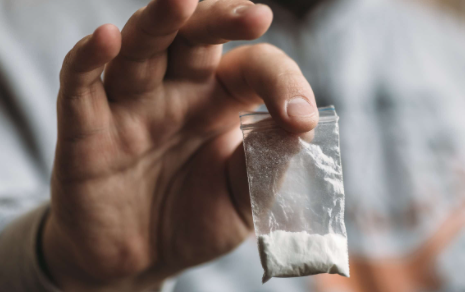
Cocaine is an addictive stimulant drug that is made from the leaves of the coca plant. The effects of cocaine depend on how much is taken and how often it’s taken.
The risk for addiction is high when someone takes cocaine frequently (several times a day). Cocaine users may use more and more as they try to maintain their high. One of the challenges for long-term users, or those who have developed an addiction, is that they will need higher doses to get the same effect as before.
Though cocaine use has decreased in recent years, about 1.5m people still suffer from cocaine addiction in the US alone. The drug boosts positive moods and energy levels, which is why it’s a popular recreational or work-related choice for many people who start using it. It’s been said that social habits are tougher to break than even physical ones, so don’t feel bad if you find it tough.
The normal process of the brain is for an activated brain cell to release a neurotransmitter that binds to the receptor of another. Cocaine causes this process to stop. Cocaine creates feelings of pleasure and reinforcement, which causes increased cocaine use. There are some major chemical reactions going on. Cocaine can increase the levels of dopamine in our brain and also alter the levels of serotonin. Although these neurotransmitters control different things, they do have an effect on how we feel.
Cocaine prevents dopamine from being reabsorbed which causes it to linger in the brain. This can lead to a brief, intense feeling of euphoria. When the cocaine wears off and has lost its effect, there is no dopamine left for your brain to make. This can lead to depression, exhaustion and mood swings and worsen the effects of cocaine. If a user starts using more cocaine, it is likely they will crave cocaine again.
4. CIGARETTES ADDICTIONS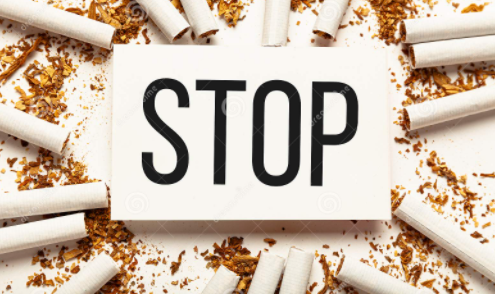
A major reason for the addiction is the physical dependence on cigarettes. The nicotine in tobacco smoke increases the levels of dopamine to a certain degree, which makes it more addictive.
Nicotine stimulates areas of your brain that control reward and pleasure. It also increases levels of a chemical called dopamine, which plays a big role in addiction.
In turn, all of these factors make smoking addictive and hard to quit.
Smoking causes more than 480,000 premature deaths each year in the United States alone because it leads to heart disease and lung cancer among other things. In fact, smokers may be up to five times more likely than nonsmokers to die from lung cancer!
Thousands of Americans continue to be addicted to nicotine from cigarettes, despite public awareness campaigns and laws designed to discourage this kind of addiction.
The nicotine found in cigarettes is as addictive as heroin. When a person smokes, the brain goes through changes to make space for the nicotine that it so badly needs.
However, when the brain no longer gets any nicotine, withdrawal symptoms will occur because of how tough it is to deal with being weaned off them. People who quit smoking often suffer from mental health problems like anxiety and irritability. You might also experience strong cravings for nicotine.
Nicotine quickly reaches the brain when it’s inhaled and on top of this, it relaxes the user. The physical addiction to nicotine is down to these factors. Nicotine can raise your mood and pulse when you first start smoking, but it doesn’t last long. After the initial effects wear off, people with nicotine addiction often develop cravings for another cigarette.
5. PRESCRIPTION PAINKILLERS ADDICTIONS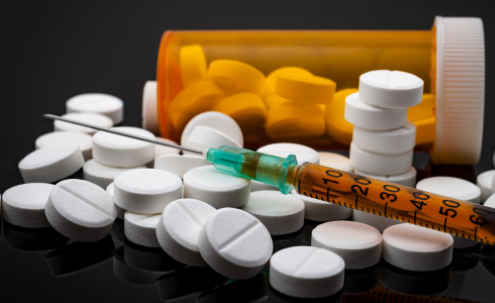
Prescription painkillers are one of the most common causes of addiction in the United States.
What Are Prescription Painkillers?
Prescription painkillers, which are also known as opioids, are medications that relieve pain. There are many different types of opioid medications including Vicodin (hydrocodone), OxyContin (oxycodone), codeine, morphine, and many more.
Painkiller Abuse And Addiction
One of the most common causes of addiction in the United States is prescription painkillers. In 2012 alone, it was estimated that there were over 16 million people who had an addiction to prescription painkillers. How do these drugs work for treating pain? They attach to receptors in our brain that can decrease our perception of discomfort or even block out all feelings at all.
The over-prescription of painkillers has been leading to an increase in heroin addiction. Data suggests that there was a 45% increase in heroin-related death reports in the last 30 years, while prescriptions for these drugs doubled. Drugs like Vicodin, Percocet, and codeine have the same effects as heroin. If somebody runs out a prescription drug & turns to heroin for a cheaper and more accessible replacement.
University students are more likely to abuse prescription painkillers than street drugs like heroin. Unlike the effects of heroin, there is a very strong feel-good high. This depends on how the drug is taken since it can be used as a patch or mixed into certain foods. If someone falls into the addiction of prescription painkillers, it’s possible to inject or snort them. Opiate-based drugs like these can affect the brain’s opioid receptors and lead to a variety of symptoms.
20 Best Bible Verses about Addictions to help with Fast Recovery (Break it!)
6. Methadone Addictions
Methadone is a type of opioid drug that has been used as a substitute for heroin and other opiates.
While methadone can help those addicted to other opioids, it is addictive in its own right, so methadone addiction is still possible.
Methadone’s popularity stems from the fact that it is long-lasting and strong – these two qualities help addicts avoid the withdrawal effects that they would face from stopping another opioid abruptly.
Some people use methadone because they are allowed to take it in their homes or work environment, which provides them the opportunity to be productive while taking their dose.
If you’re using methadone, withdrawal can take about three to six weeks. Many other hard drugs are similar in this respect. This is something that you should never try to do on your own – there are over 5 million people who have reported abusing methadone.
Methadone can cause a physical dependency even though its addictive qualities are lower than other opiate-based drugs. It does have strong effect on the central nervous system so people with experience may abuse it in an attempt to feel the euphoric high.
It turns out methadone, in essence, has the same effects on the brain as any other addictive opioid. It is similar to OxyContin and heroin.
This makes it helpful for folks who have an addiction to more dangerous opiates like these two have, but it cannot be a cure-all for those struggling with addiction. While gradually decreasing your intake of methadone, it’s also important to be in therapy. It’s less effective when people are taken off methadone without therapy, which often leads to addiction.
7. AMPHETAMINE ADDICTIONS
One of the many problems that have been associated with substance abuse is the addiction to amphetamines. This article will be looking at what amphetamines are, as well as how they can affect the brain and body.
Amphetamines are a class of drug that includes medications for ADHD, narcolepsy, and obesity as well as illegal drugs like Ecstasy and methamphetamine. Amphetamines work in the brain by increasing neurotransmitter activity such as dopamine, which can leave people feeling more focused and energetic.
The drug is popular because it offers a quick high that provides an adrenaline rush followed by a euphoric sense of wellbeing.
The prevalence of attention deficit hyperactivity disorder (ADHD) and the availability of drugs such as Adderall for those diagnosed with it have led to this drug finding its way to the streets. For someone with ADHD, these medications work differently by stimulating neurotransmitters in a certain area of the brain, whereas for others they might work less effectively or sometimes not at all. When these drugs are abused by someone with a disorder it can quickly become addictive.
This is partly due to the fact that they are easy to access and difficult for users to regulate how much they take.
Amphetamines stimulate the central nervous system and can make people very hyper. They also enhance or make some of your bodily functions stronger. Drugs such as heroin and cocaine are chemically addictive in the sense of producing a “high” and a subsequent cycle of compulsive drug-seeking behavior.
METH AS AN AMPHETAMINE
Methamphetamine is a potent psychostimulant of the phenethylamine and amphetamine class of drugs. It is used in the form of crystalline hydrochloride.
Methamphetamine was discovered in 1887 and there are three different forms: the freebase, the hydrochloride, and a combination of these two.
This drug is being used more often because it is cheaper than cocaine or heroin and doesn’t need to be injected to be effective.
Like other types of addictions, amphetamine use is usually during a period of abundance followed by a time without. It affects the central nervous system and will change brain signaling. All neurotransmitters in the body are also affected during this use. It affects the reward center, which can create a sense of addiction. The person will experience an enhanced mental state and feel more confident and quick-thinking.
8. BENZODIAZEPINES ADDICTION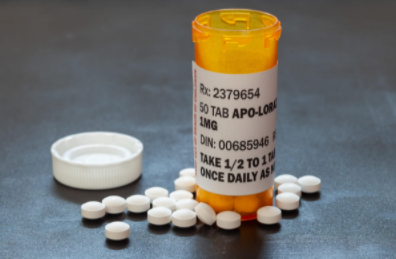
Benzodiazepines are the most prescribed drugs for insomnia and anxiety, and benzodiazepines addiction is a huge problem in the United States.
Benzodiazepines are a type of drug that is prescribed to people who suffer from anxiety or insomnia.
They work by calming people down and making them more relaxed. The problem with these drugs is that they are very addictive because they produce a feeling of euphoria in people. This causes many addicted individuals to keep taking these drugs, which can result in serious health problems as well as death.
Benzodiazepine addiction is on the rise in America due to doctors not remembering how dangerous they are, their over-prescription rates, and because there is no legislation governing their use for anxiety or insomnia.
With close to 40 million Americans struggling with anxiety and stress-related disorders, it’s no wonder that benzos are one of the most common addictions/habits. Those going through clinical anxiety, stress or panic attacks will often be prescribed benzodiazepines.
Benzodiazepines work by increasing dopamine production in the brain. This has been linked to the drug’s ability to relieve anxiety and contribute to dependency among people who take it.
Benzodiazepines can lead to the deterioration of dopamine receptors. The temporary surges in dopamine can cause even greater bursts of dopamine. Benzodiazepines are neurotoxins that can become addictive. They addict brain receptors and make it more difficult for them to stabilize. This can result in increased sensitivity to stimuli and greater pleasure as a result.
Withdrawal symptoms can include:
- Sweating.
- Nausea.
- Pain and stiffness in the muscles.
- Difficulty concentrating.
- Problems with sleep.
- Irritability.
- Anxiety.
- Panic attacks and heart palpitations.
- Tremors in the muscles.
- Potential of seizures and psychosis for those on high doses.
9. CRYSTAL METH ADDICTIONS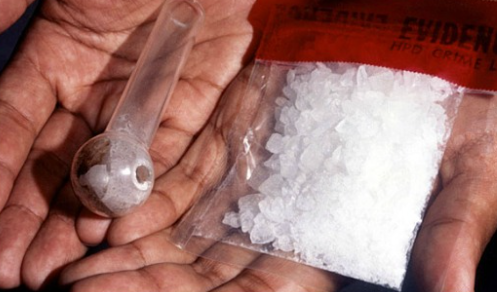
Crystal Meth addiction is a serious public health issue. According to the Center for Disease Control, over 6 million people in the United States – including 346,000 adolescents ages 12-17 – have tried methamphetamine at least once. Moreover, crystal meth has been linked to increased aggression and violence.
The drug affects different people in different ways. For example, a survey from the National Institute on Drug Abuse found that about half of people who use crystal meth say it makes them feel more confident and less anxious or depressed; about one-third say they feel less shy or inhibited; and about one-fifth said it makes them more focused or organized.
If people using meth are isolated from their family & friends, and not able to reclaim that once they break the habit, it’s going to be a lot harder for them.
Sometimes quitting on one’s own is difficult or impossible. As a result, addiction experts recommend formal addiction treatment. We know that meth is a highly addictive drug and can have many severe consequences on the body. The National Institute on Drug Abuse and DEA both agree with this.
Taking meth releases large amounts of neurotransmitters, which makes the user feel good and energetic. It can also produce psychoactive effects.
10. PROCESS ADDICTIONS: GAMBLING, SEX, AND FOOD ARE AMONG THE WORST ADDICTIONS.
process addiction is the tendency to become addicted to the process of doing something, rather than the outcome.
It’s difficult to tell what causes process addictions, but there are a few factors that are believed to contribute. One is that someone may have an obsessive personality and enjoys following strict rules or rituals. Another is that they feel like they’re not able to achieve success unless they follow these steps or routines. The easiest way for someone with a process addiction to learn more about their addiction is by talking about their feelings and thoughts with a therapist.
Process addictions are more common in people who grew up in dysfunctional families. They often use these rituals or routines as a way of coping with stress and anxiety brought on by their family situation. They might also have grown up in families with high expectations for performance.
Some of the most common process addictions are psychological dependence on gambling, sex, gaming, food, and even shopping. Gambling and shopping can actually raise levels of dopamine which is comparably effective to drugs.
These are other Worst Addictions in the World:
Addiction to Behavior (gambling, sex)
Addition to Behaviors (eating too much, shopping, etc.)
Addiction to Material Items (aggression, hoarding)
